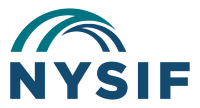Establish a standard procedure for reporting and investigating all injuries – and near misses – no matter how trivial, even if medical treatment is not necessary. Every accident and near-accident is an opportunity to correct hazards, unsafe behaviors, and avoid a recurrence.
Do an initial investigation as soon as possible while facts are fresh among witnesses to the event. Prompt investigations by an immediate supervisor offer an opportunity to convey concern for the welfare of employees, discuss unsafe acts and conditions, and increase knowledge of workplace hazards.
Investigation Tips
Question injured employees in a relaxed atmosphere away from the work area. Explain that the purpose of the investigation is to determine the cause and avoid a recurrence. Do not place blame.
Unsafe acts cause many accidents, alone or in combination with unsafe conditions. Be precise in identifying the true nature of the unsafe act or condition to identify the underlying cause, rather than attributing the accident to “carelessness.”
Conducting the Investigation
Answer all of the following:
- Who?
- Name, address, department, occupation of all injured workers, anyone who may have been involved in or prevented the accident, anyone who witnessed the accident, or has knowledge of the underlying condition.
- What?
- Specific task being performed, equipment used, how the injury occurred (struck against, struck by, caught in, fell, etc.), injury description and body part. Specify “right” or “left” if applicable.
- Where?
- This is important for correcting conditions and noting areas of accident frequency.
- When?
- The time of accident is significant: Hazardous tasks done near the end of a workday may produce accidents due to weariness or boredom.
- Why?
- The unsafe condition or specific act that caused or contributed to the accident (missing machine guard, slippery floor, broken ladder rung, etc.). Has there been a corrective action and what is the correction? If not, what is the required corrective action?
Accident Recordkeeping
Submit all injury and investigation reports to the person responsible for ensuring adequate investigations and corrective actions. Maintain records of all accidents to improve weak spots in your safety program. Too many falls may indicate a need to examine housekeeping or walking surfaces. A high incidence of eye injuries may indicate a need to eliminate the source of flying particles and require wearing goggles or eye shields.
Review safety training and supervision in areas prone to unsafe acts.
Familiarize yourself with New York State Workers’ Compensation Board and federal Occupational Safety & Health Administration reporting requirements.
